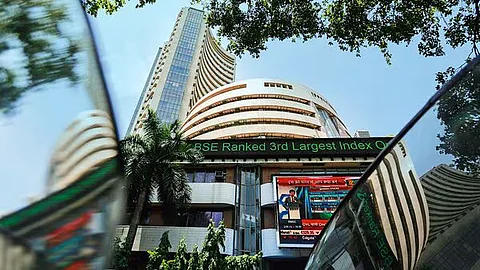

The recent correction in the Indian stock market from its September 2024 highs presents a compelling opportunity to invest in India’s long-term growth story, according to global brokerage Morgan Stanley. While the firm has revised its base case Sensex target for June 2026, it also projects that the index could reach the 1,00,000 mark under its bull case scenario.
In its latest outlook, Morgan Stanley has set a base case Sensex target of 89,000 by June 2026, representing an 8% upside from current levels. However, under its bull case scenario — to which it assigns a 30% probability — the brokerage anticipates that the Sensex could touch 1 lakh as early as June 2026.
“Our new Sensex June 2026 target of 89,000 (8% upside) incorporates our latest earnings estimates and is rolled forward from the December 2025 target of 82,000,” said Ridham Desai and Nayant Parekh, equity strategists at Morgan Stanley.
This level implies that the BSE Sensex would trade at a trailing P/E multiple of 23.5x — ahead of the 25-year average of 21x. The premium over the historical average reflects growing confidence in India’s medium-term growth cycle, its lower beta, a higher terminal growth rate, and a more predictable policy environment, according to the Morgan Stanley report.
In the base case scenario — which Morgan Stanley views as having a 50% probability — the Sensex is expected to reach 89,000 by June 2026.
This outlook assumes continued improvements in India’s macroeconomic stability driven by fiscal consolidation, rising private sector investment, and a favourable real growth–real interest rate differential. A stable domestic growth trajectory, no US recession, and moderate oil prices are also key assumptions in this forecast.
The base case also factors in progress on an India–US trade deal, a 50-basis-point cut in short-term interest rates, and a broadly positive liquidity environment. Under this scenario, Sensex earnings are projected to grow at a compound annual growth rate (CAGR) of 16.8% through to FY28.
In the bull case, Morgan Stanley envisions a more supportive macroeconomic and policy backdrop, driving the Sensex to 1,00,000 by June 2026.
Key assumptions include crude oil prices remaining consistently below $65 per barrel, enabling further monetary easing by the Reserve Bank of India, and a resolution of global trade tensions through the rollback of tariff policies. Additionally, unexpected policy reforms — such as cuts in GST rates and progress on agricultural reforms — could provide further impetus.
In this scenario, earnings growth is expected to accelerate to 19% annually over FY25–28.
Morgan Stanley assigns a 20% probability to its bear case, under which the Sensex declines to 70,000 by June 2026.
This scenario assumes a sharp increase in crude oil prices above $100 per barrel, prompting monetary tightening by the RBI to preserve macroeconomic stability. It also factors in a pronounced global slowdown, including a US recession. In such conditions, earnings growth is expected to moderate to 15% annually through FY28, with a marked slowdown in FY26. Equity valuations are also likely to contract in response to deteriorating macroeconomic fundamentals.
Morgan Stanley maintains a strategic preference for domestic cyclicals over defensive and external-facing sectors, reflecting its confidence in India’s resilient domestic growth narrative. The brokerage remains overweight on Financials, Consumer Discretionary, and Industrials, while under-weighting Energy, Materials, Utilities, and Healthcare.
The report notes that the current environment is likely to favour a “stock picker’s market”, in contrast to the macro-driven rallies witnessed since the onset of the Covid pandemic. As a result, the firm’s average active sector positioning is limited to just 80 basis points, highlighting a more selective, bottom-up investment approach.
Notably, Morgan Stanley remains “capitalisation-agnostic”, indicating flexibility in identifying opportunities across large-, mid-, and small-cap segments.